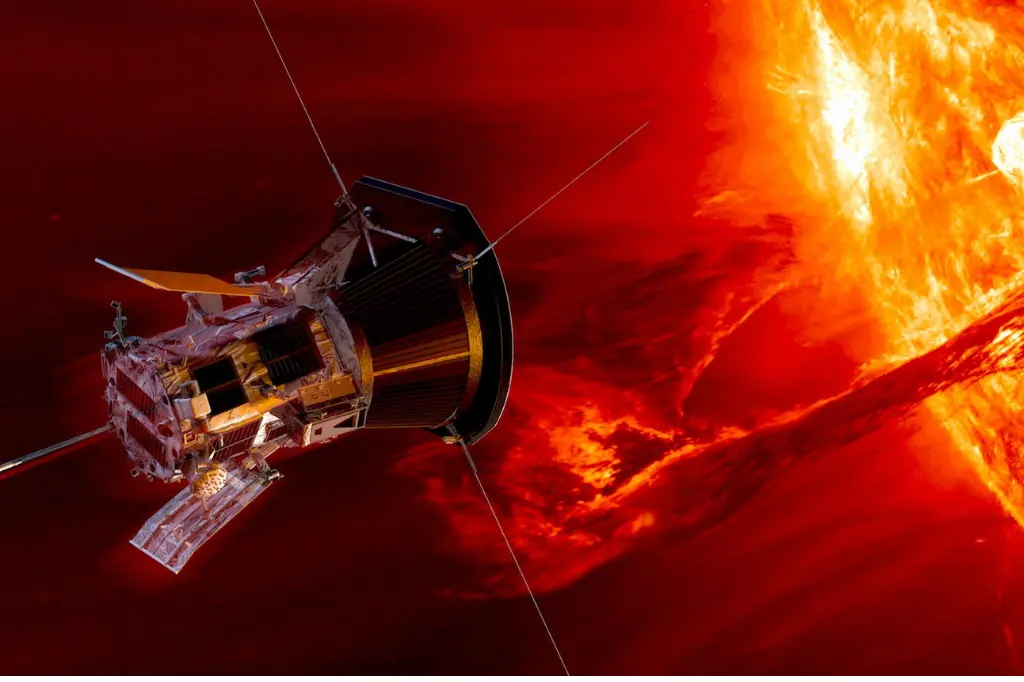In an extraordinary feat for humankind, NASA’s Parker Solar Probe has achieved a historic milestone by reaching a record-breaking proximity to the Sun. For the third and final time, this remarkable spacecraft has ventured within a mere 3.86 million miles (6.1 million kilometers) of the Sun’s scorching surface — a distance NASA deems as “hyper close.”
A Journey of Extreme Precision and Resilience
Launched on August 12, 2018, Parker Solar Probe has since embarked on 23 perihelions (close passes) of our star. It’s made two previous similar passages, once on December 24, 2024, and again on March 22, 2025. But today’s approach marks its final venture to such proximity, cementing its place in the history of space exploration. For comparison, this distance is equivalent to just a few yards from the end zone if the entire space between Earth and the Sun were scaled to the length of an American football field.
As the probe hurtles through space at an astonishing speed of 430,000 miles per hour (690,000 kilometers per hour), it’s braving extreme conditions. The Sun’s heat is extreme, with temperatures soaring between 1,600 and 1,700 degrees Fahrenheit (870 to 930 degrees Celsius). Fortunately, Parker’s only line of defence against these unforgiving conditions is its specially designed carbon composite heat shield. This shield is integral to its survival, protecting it from both extreme temperatures and intense ultraviolet radiation.
Understanding the Sun’s Corona: A Mystery Unveiled
One of the Parker Solar Probe’s most ambitious goals is to unlock the secrets of the Sun’s corona. This outer atmosphere, which is nearly a million times hotter than the Sun’s surface, has baffled scientists for decades. The probe’s close encounters with the Sun are critical to understanding this mysterious region, which also gives rise to solar winds — streams of charged particles that influence space weather.
The data gathered by Parker is essential for improving solar weather forecasts, which could help prevent damage to satellites and space stations and even protect astronauts from radiation. It also has implications for the stunning auroras, also known as the Northern Lights, which are caused by the interaction of solar wind with Earth’s magnetic field.
Magnetic Reconnection: A Groundbreaking Discovery
New revelations from Parker’s close flybys have added yet another layer of understanding to solar phenomena. A groundbreaking study published on June 3, 2025, based on Parker’s data, identified a previously unknown source of energetic particles in the solar corona. This discovery sheds light on a process known as magnetic reconnection, where magnetic field lines break and recombine powerfully and explosively.
This process is responsible for powerful solar activities, such as solar flares and coronal mass ejections (CMEs). Parker has now provided a first-of-its-kind view of how magnetic reconnection occurs near the Sun, where magnetic fields are far stronger than those near Earth. Dr. Mihir Desai, lead scientist of the study, emphasized the importance of this discovery, noting that it sheds light on the profound energy dynamics at play in the Sun’s outer atmosphere.
The End of Parker’s Active Mission: A Bright Legacy
Though Parker’s historic mission is nearing its conclusion, its legacy will persist. Thanks to gravity assistance from Venus, the spacecraft has already achieved its closest approach to the Sun. Without further assistance from planetary gravity, it will not be able to venture closer than its current distance.
While the Parker Solar Probe will continue its orbit around the Sun for the foreseeable future, it is expected that its thrusters will eventually deplete their fuel supply. However, its heat shield might remain intact in orbit for centuries, preserving the probe’s memory and the groundbreaking discoveries it has made.
This final pass marks the end of one of the most daring and ambitious space missions ever undertaken, pushing the boundaries of human knowledge and our understanding of the Sun, space weather, and the fundamental structure of our solar system.
More Latest News & Information Visit Now! Voxa Times






